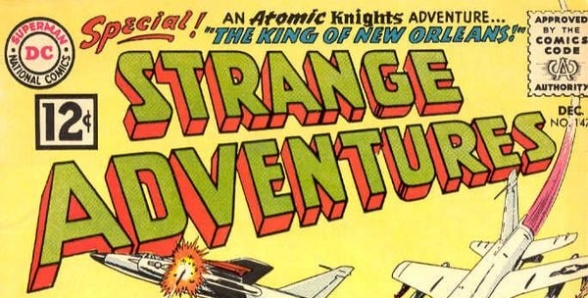Multiversity’s history column returns with another installment of its year-by-year analysis of the comic industry. Before moving forward with today’s coverage of 1962, you might want to revisit 1960 and 1961.

Dell, the industry giant and sales leader, had attempted to set a new standard when it bowed to inflationary pressure in 1961 and instituted the first price increase since comic books were invented about 30 years earlier. When readers saw the change from ten cents to fifteen, they revolted and sales plummeted. When DC and Marvel, Dell’s main competitors, raised their prices to twelve cents in 1962, readers were unhappy accepting. Dell tried lowering prices to match, but the damage was done and their lost readers didn’t return. The turmoil caused a split between Dell and its printer, Western Printing & Lithography. Dell reacted to lost sales by cancelling licensed titles, which were less profitable than original material, and bringing its printing business in-house. The axe even came down on the long-running anthology “Four Color,” which had over 1300 issues to its name. Western responded by creating the Gold Key imprint and continuing some of Dell’s more popular licensed properties. Its initial titles included “Donald Duck,” “Bugs Bunny,” “Tarzan,” and “The Lone Ranger.”
Gilberton, another industry leader, had found success in the niche business of adapting literary works into the comic format under the banner “Classics Illustrated.” Their readers often used the adaptations as “study aids” in school. After twenty years or so of brisk business, sales took a dip in the early 1960s when competition arrived in the form of “Cliff Notes.” Gilberton’s true enemy and downfall, however, was the US Postal Service.
From the beginning, the USPS quietly guided comic evolution with an invisible hand through its arbitrary regulations for second class postage rates, and arbitrary enforcement of same. Second class postage was a reduced shipping rate for periodicals shipped to subscribers, and publishers would bend over backwards to get it because a comic shipped to a subscriber was somewhere around 800% more profitable than one sold on a newsstand. At the same time, the application for the rate was several hundred dollars and non-refundable, so publishers would also try to cheat the system by continuing the numbering of a canceled title under a new name, hoping no one would notice the switch. It was this unscrupulous practice by others that got Gilberton in hot water.
The USPS looked at “Classics Illustrated” and saw a new title with every issue. Even worse, each issue was a full-length story with no monthly continuity. The USPS felt it was being snookered, and it wanted to classify the materials as books, which weren’t eligible for reduced rates. Given their format and regularity, Gilberton naturally argued their product was a periodical anthology, but still tried to concede to the USPS’ demands through serialized backup features. In 1962, the hammer came down when the USPS issued a final decision in the matter: the material was a book. Facing the untenable loss of massive profits from subscribing schools and libraries, Gilberton abruptly closed its US division. It maintained a presence in the European market and continued to produce new material for years to come.
Marvel Rising
“The Fantastic Four” was a hit from its first issue, and Marvel’s success continued to build in 1962. The fan response was strong enough to support new letter columns, which boosted the growth of fandom as fans started communicating with one another directly. As he ran low on ideas, Stan Lee began stretching stories between issues. This ran against industry standards at the time because distribution was not reliable enough to guarantee readers would have access to consecutive issues, but the response was positive as readers felt they were getting deeper characterization and fully explored plots. It also boosted the number of subscribers, which paid off handsomely for Marvel. Two DC writers, Bob Haney and Arnold Drake, read some Marvel issues and tried to warn their publisher about the strong competition, but their words fell on deaf ears and DC continued with business as usual.
Not every decision Marvel made was a wise one, however. The Federal Trade Commission slapped Marvel owner Martin Goodman with a penalty for giving a promotional allowance to some retailers but not others. He got off easy, all things considered. His penance was to submit a report explaining how his procedures had been updated to comply with the law.
Continued below
A minor event from 1962 that started a revolution was the publication of “The Adventures of Jesus.” Created by Frank Stack, who signed the work as Foolbert Sturgeon, this comic was the first underground comic. I wrote about the history of Underground Comix extensively a few years ago, so I won’t rehash the point here.
After DC published the Atomic Knights story “King of New Orleans” in “Strange Adventures” #??, the New Orleans Jazz Museum wrote to them asking for the original artwork. DC promptly donated it to them, and it remained on display for decades.
As mentioned in the 1961 article, the Academy of Comic Book Fans and Collectors voted on multiple categories to determine the best creators and creations of 1961. The awards were given out in 1962 as the Alley Awards, the first commemoration of creative effort in comics. “Fantastic Four” won best title, but DC swept the other three categories.






